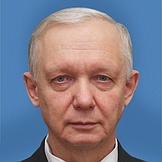Regional flags and emblems


PROFILE
Established 20 October 1930 as the Khakas Autonomous Region
The Khakas Autonomous Soviet Socialist Republic since 1990
The Republic of Khakassia since 1992
Capital Abakan
The Republic of Khakassia is part of the Siberian Federal District
Area 61.600 sq km
Population 525 500 (2025)
Ethnic groups
(2020 National Census, %)
Russian – 82,14
Khakas – 12,71
Other – 5,15
Administrative divisions (2024)
Municipal districts − 8
City districts − 5
Rural towns − 4
Rural districts – 82
Geography and climate
The Republic of Khakassia lies in the southern part of Eastern Siberia and occupies a part of the Minusinsk and Chulym-Yenisei hollows. The region stretches 400 km north to south and 200 km east to west.
The Republic borders on the Krasnodar Territory in the north, east and south-east, on the Republic of Tyva in the south, on the Republic of Altai on the south-west and on the Kemerovo Region in the west.
The region has more than 500 rivers and lakes. The main rivers are the Yenisei, the Abakan, the Tom and the Chulym.
The climate is sharply continental. January temperatures average –19.7°C. July temperatures average 14.8°C.
The region is home to the Khakassky State Nature Reserve, the Pozarym State Nature Reserve, Khakassia Nature Park, five sanctuaries and five natural landmarks.
Government
The legislative branch is represented by the Supreme Council of the Republic of Khakassia, which is the permanent, supreme representative and the only legislative power in the republic.
The Supreme Council has 50 deputies elected for a period of five years, with 25 of them running in single-member constituencies and 25 – in the single republican electoral district in proportion to the number of votes cast for lists of candidates nominated by electoral associations.
The current Supreme Council was elected in September 2023. Its term expires in September 2028.
The executive branch is the Government of the Republic of Khakassia led by the Head of the Republic of Khakassia, who is the Prime Minister of the republic. The executive branch incudes the Government, ministries, state committees of the Republic of Khakassia, as well as other committees and executive bodies.
The republic’s Head – the Prime Minister is the highest-ranking official of the Republic of Khakassia elected for a period of five years by Russian citizens who permanently reside in the republic. The term of the current Head and Prime Minister of the Republic expires in September 2028.
Economy and natural resources
The Republic of Khakassia has deposits of ferrous and non-ferrous materials such as iron ores and flux, copper, molybdenum, zinc, lead, as well as precious and rare metals; the large reserves of fossil fuels, building and chemical materials, all of which provide the foundation for the development of the mining industry in the future.
Electricity, metallurgy, and fuel are the top industries. Major economic activities include mining, processing, electricity, water and gas production and distribution, transport and communications, whole-sale and retail commerce, among others fields.
The republic’s energy sector includes Russia’s largest and most powerful hydroelectric power station, Sayano-Shushenskaya, which ranks sixth in the world in terms of capacity. Other energy facilities are the Mainskaya Hydroelectric Power Station, and the Abakanskaya, Abazinskaya and Sorskaya thermal power stations.
The following factories lead the key industries: RUSAL Sayanogorsky Aluminium Plant, Russia’s leader in the production of aluminium alloys, and a centre of innovative technology testing and implementation; Khakas Aluminium Plant, Russia’s most technologically advanced aluminium factory; RUSAL SAYANAL, a manufacturer of foil and foil-based packaging. Aluminium and related products are responsible for 80% of exports. Other non-ferrous factories include: Sorsk Mining and Metallurgic Complex (ferromolybdenum and copper concentrate) and the Sorsk Ferromolybdenum Plant (copper-molybdenum ore mining).
The leading fuel company, SUEK-Khakassia, is also the largest producer of coal. The region is home to the Abakan Mine, a producer of iron ore concentrate.
The Republic of Khakassia is a region in Southern Siberia with well-developed agriculture. Large areas are used as pastures and hay lands, which contribute to the development of the livestock farming, including fine-wooled sheep and dairy farming. Horse breeding plays an important role. Crop farming focuses on wheat, barley, oats, sunflowers, and beets. In the regional GDP, agriculture accounts for 4%; agricultural land covers less than 20% of the Republic’s total area.
Culture and tourism
Special natural landmarks, climate, springs, historical, ethnographic and picturesque landscapes ensure that possibilities exist for the development of tourism.
Khakassia is a land of rich history and ancient culture that has preserved over 30,000 menhirs, ancient stones and mounds, each unique and of great value historically; there are also petroglyphs, ancient ruins, fortifications, burial mounds and cemeteries. Of these, the Large Salbyksky Mound, the Sulekskaya petroglyphs, the Maloarbatskaya petroglyphs, the Boyarskaya petroglyphs, the Podkuninskaya petroglyphs, ancient structures of the Sunduki Ridge, the Oglakhty Fortress, the village of Chebaki, and the Kopensky and Uybatsky Chaatas medieval burial places, are the most well-known. Certain landmarks are one of a kind worldwide.
Waters of Belyo Lake, the Republic’s largest lake located in the Khakas Natural Reserve, are similar in their content to the medicinal springs of Karlovy Vary.
The region has several establishments for long-term recreation such as sanatoriums, health and recreation resorts, and tourist centres. The Lake Shira Resort, one of Siberia’s largest, and Tumanny Sanatorium, are based near the Shira springs and the Lake Dikoye radon springs.
There are four theatres, 25 museums and over 200 libraries in the Republic. The Skazka puppet theatre has achieved nationwide renown after winning several national and international awards, including the Golden Mask, Russia’s prestigious theatre award.



